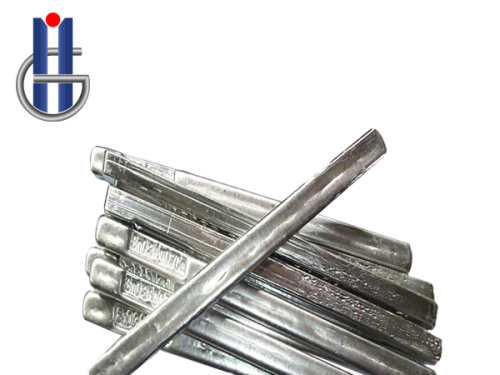Introduction:
Lead-tin bars, composed of a combination of lead and tin, have proven to be valuable alloys with diverse applications in various industries. This article explores the unique characteristics of lead-tin bars, their manufacturing process, and the wide range of applications where these alloys play a crucial role.
Composition and Manufacturing Process:
Lead-tin bars are alloys that typically consist of varying proportions of lead and tin. The combination of these metals results in an alloy with desirable properties, including low melting points and excellent malleability. The manufacturing process involves carefully blending lead and tin in specific ratios, followed by casting or other shaping methods to produce bars of the desired dimensions.
Low Melting Point and Malleability:
One of the distinctive features of lead-tin bars is their low melting point, making them ideal for applications requiring easily fusible materials. This characteristic makes these alloys suitable for soldering, where the alloy is melted to create a bond between metal components. The malleability of lead-tin bars further enhances their utility, allowing for easy shaping and forming to meet the requirements of various manufacturing processes.
Soldering Applications:
Lead-tin bars are widely utilized in the electronics and plumbing industries for soldering applications. The low melting point of these alloys allows for efficient bonding of electronic components on circuit boards, ensuring a reliable connection. In plumbing, lead-tin solder is commonly used to join pipes and fittings, providing secure and durable connections.
Bearing Alloys:
Lead-tin bars find applications in the manufacturing of bearing alloys. The malleability and anti-friction properties of lead-tin alloys make them suitable for use in bearings, reducing friction and wear in mechanical systems. These alloys contribute to the longevity and efficiency of rotating machinery in various industrial sectors.
Radiation Shielding:
Lead-tin alloys, with their density and radiation absorption capabilities, are employed in the medical field for radiation shielding. These alloys act as effective barriers against X-rays and gamma rays, ensuring the safety of patients and healthcare professionals during diagnostic and therapeutic procedures.
Automotive and Marine Applications:
Lead-tin bars are also utilized in automotive and marine industries for applications such as bearings, bushings, and other components requiring a combination of strength and anti-friction properties. The versatility of lead-tin alloys makes them suitable for various high-stress environments in these sectors.
Environmental Considerations:
It's essential to note that the use of lead-containing alloys, including lead-tin bars, has raised environmental concerns due to the toxicity of lead. Efforts are underway to explore alternative materials and processes that maintain the desirable properties of lead-tin alloys while minimizing environmental impact.
Conclusion:
Lead-tin bars stand as versatile alloys with unique properties that make them indispensable in several industries. From soldering in electronics to bearing applications and radiation shielding in healthcare, the diverse uses of lead-tin alloys highlight their significance in modern manufacturing. As industries continue to explore alternatives and address environmental considerations, lead-tin bars remain integral components in many critical processes, contributing to the functionality and efficiency of a wide range of applications.



 Pure Tin Ingot: Essential Material for Diverse Industrial Applications
Pure Tin Ingot: Essential Material for Diverse Industrial Applications
 Unlocking the Potential of Pure Tin Bars: Essential Components for Diverse Industries
Unlocking the Potential of Pure Tin Bars: Essential Components for Diverse Industries
 Lead Bar for Sale: Uses, Specifications, and Buying Considerations
Lead Bar for Sale: Uses, Specifications, and Buying Considerations
 Exploring the Versatile World of Tin Wire Products: A Comprehensive Overview
Exploring the Versatile World of Tin Wire Products: A Comprehensive Overview